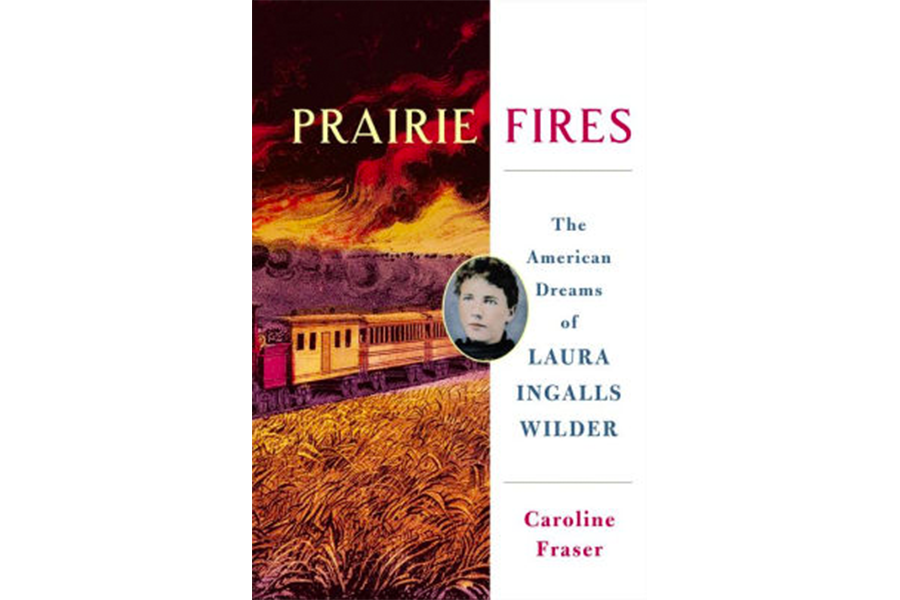'Prairie Fires' author Caroline Fraser offers a substantial biography of Laura Ingalls Wilder
Loading...
Well. Surprise, surprise. I thought she was talking to me – me.
Not so. I wasn’t the only one duped. I, and I bet many of you, and Virginia Kirkus, too, who was working as an editor at Harper & Brothers at the time when across her desk slid the manuscript of "Little House in the Big Woods": “The real magic was in the telling. One felt that one was listening, not reading. And picture after picture ... flashed before my inward eye. I knew Laura – and the older Laura who was telling her story. Here was a book no depression could stop.” If only Laura Ingalls Wilder’s "Little House" books, instead of a world war, could have stopped the Great Depression. But that’s as much an idyll as the series.
In her new book Prairie Fires, Caroline Fraser doesn’t mush the idyll of Wilder’s books so much as set the stories in their true surrounding circumstances and thereby let reality do the mushing. Fraser brings a learned hand to this substantial biography of Wilder, learned and substantial though also light on its feet, washed with color, and opinionated.
We meet here a Wilder who embodied “a great American drama in three acts”: poverty, struggle, and reinvention, the latter while engaged in the profound autobiographical novelization of American mythmaking and self-transformation. Here we meet the human: parsimonious and humble and with a touch of vanity; not an intellectual, but an intellect; blessed with the dry humor of endurance, all things considered; as proud of her hen-raising skills as she was gimlet-eyed about the iron drudgery of rural, domestic expectations; and the curse of money and never having enough, or any at all.
The epic, uplifting, triumph-of-the-American-farm series Wilder wrote – or co-wrote, as will be seen – as had limelight enough, the eight books in the series having sold 60 million copies in 45 languages that created the cozy security of nights by the frontier fire, with daytime drama that was thrilling, not demoralizing or terrifying. Okay, enough about the subject matter of the books and on to the demoralizing and, at many a time, terrifying life of Wilder.
The first two acts of Wilder’s life were marked by promise, then having the rug yanked out from under her a seemingly unfair number of times, then the having the stoic grit to rebuild or move on. When Laura was a girl, the Ingalls family upped from a prospering Wisconsin farm for parts unknown for reasons unknown. Evidently the tall grass, big bluestem prairie beckoned. They didn’t reckon on the locust, over 3 million strong, proving to be the market for their wheat crop. Fraser draws a wicked picture: “Like a demonic visitation, it was flickering red, with silver edges,” a ground cloud “that appeared to be alive, arriving ‘at racehorse speed.'”
Fraser’s color commentary freshens the story time and again, because Laura’s life was one of wildfire, dust storms, house fires, illnesses like diphtheria, tornadoes, crazy “sinister” weather (as is said, if you don’t like prairie weather, wait a minute), warfare in the Black Hills and warfare with the Osage. “An 1807 watercolor portrait of an Osage warrior shows his bald head sprouting a brilliant orange crest, like a mohawk, at the crown of his skull. His eyelids, cheeks, and torso are likewise colored a fierce orange, contrasting with the blue-green headdress bristling with the head of a small raptor, the beaks of waterfowl, and the skins of hummingbirds. The Osage were not shy about defending their land and their interests.” Or when “an ominous funnel began forming out of the black clouds to the north. The air turned green.” Then there are times that her writing overreaches and jangles: “the whole remains elusive, obscured under the soot of time,” followed shortly thereafter by “Looking for their ancestry is like looking through a glass darkly.” Soot?
Giving a panoptical look at Wilder’s time is Fraser’s intelligent grasp of the bankers’ role in the Great Depression, the environmental role in the Dust Bowl, the hucksterism of the Homestead Act: “farmers were increasingly aware that the system was rigged to favor the railroads, middlemen, and large operations such as the bonanza farms of the Red River Valley, which could afford to stockpile grain and wait for the market to turn.” There is also some unfortunate infatuation on both Lane and Wilder’s part with fascism, which lingers a mite too long. And Wilder displays a level of racism that even “the times” can’t excuse for its insensitivity. “Wilder’s treatment of Indians, for all of her admiration of them, had undeniably reductive and racist elements.” We do not read of Osage desperation, but three times we do come across the slur “The only good Indian is a dead Indian.”
Much of the book, as needs be, circles around the writing relationship between Laura and her daughter, the journalist Rose Wilder Lane. Fraser comes down hard on the collaborationist side – and Fraser’s extensive footnotes appear to bare this out: that Wilder would complete a rough draft, Lane would add polish, and then Wilder would roughen the too-polished and rein in the melodramatic. Lane did not ghostwrite the books, nor was she merely a cheerleader for Mom. Theirs was a freighted relationship – Lane was a wild one, and a bit unstable to boot. Wilder couldn’t have been different – but they understood each other’s strengths and played to them ... to, what was that? Sixty million copies.
Fraser’s volume feels as secure in its verisimilitude and necessary guesswork as those cozy fireside-reading sessions out there on the glorious prairie, that burning, pestilential, heartbreaking, health-sapping, dust-broiling, dark, and wintry prairie. The book will stand true – a testament to bootstrapping work by both Fraser and Wilder – a lot longer than those sod huts.






